Indice - Table of contents
Lo Nuevo[hide]
Reportes: From The St... : Cubadisco 2...
Tienda: Cuban Music Store
Reportes: From The St... : Cubadisco 2...
Fotos: Tom Ehrlich
Staff: Kristina Lim
Musicos: Juan Formell
Musicos: Yordamis Megret Planes
Musicos: Yasser Morejón Pino
Musicos: José Luis "Changuito" Quintana...
Musicos: Dennis Nicles Cobas
Fotos: Eli Silva
Grupos: Ritmo Oriental : 1988 - Vol. IX - 30 a...
Musicos: Rafael Paseiro Monzón
Musicos: Jiovanni Cofiño Sánchez
Fotos Del Día [hide]
Discography - 80-85: The Ricardo Hernández Years
1980: So, the story goes. The band recorded an entire album in 1980 but by now there were two poles in opposition within the band and there ensued a power struggle. The gaita traditionalists (represented by the Ricardo Portillo-Simón García songwriting team) and the more experimental corner leadered by Ricardo Hernández, who was feeling more and more influenced by salsa and Irakere each day. Hernández won and the entire recorded album was scrapped. Portillo and García left and in solidarity piano man Jose Luis García departed, along with Baglieri (guitar) and Carlos Sánchez (bass). The resulting album was a huge leap forward.
1980 - Guaco 80 - Integra
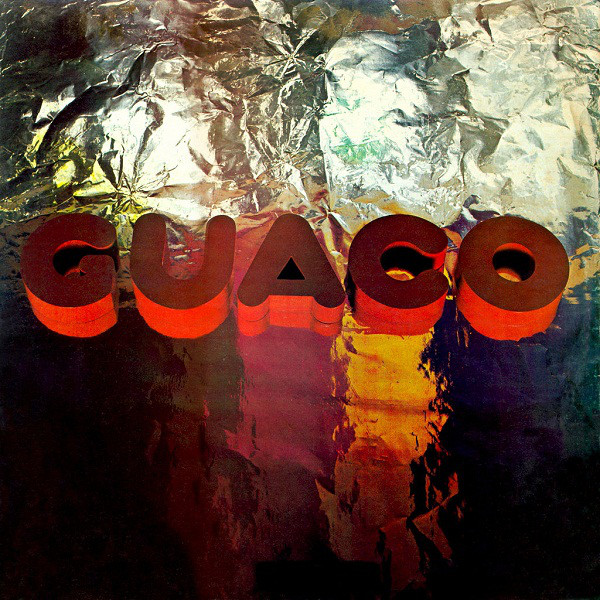
Side A
01- Homenaje a Jesús Lozano (Ricardo Hernández)
02- Las Pulgas (Ricardo Hernández)
03- María (Ricardo Hernández)
04- La Reforma (María Viloria)
05- Diferendo (R. Hernández/H. Molina)
Side B
01- Maracucha (Ricardo Hernández)
02- Chinita (Ricardo Hernández)
03- Disco Guaco (Ricardo Hernández/Gustavo Aguado)
04- Los Parranderos (Ricardo Hernández)
05- Noviazgo En Noche Buena (José Castillo M./Heriberto Molina)
Personnel
Vocals: Amílcar Boscán (tracks A1, A2, B5), Sundín Galué (tracks A3, B4), Gustavo Aguado (tracks A4, A5, B1, B2, B3), Ricardo Hernández (track B3)
Tambora: Johnny Flores & Luís Rincón
Charrasca: Alexis Moreno
Furro: Alfonso Aguado
Congas: Ricardo Hernández, Gustavo Aguado
Bongos: Gustavo Aguado
Drums: Federico Pineda
Flute & Sax: Frank Velásquez
Guitar: Romer Quintero
Cuatro: Ricardo Hernández, José Castillo
Bass: Sundín Galué, Romer Quintero
Backing Vocals: Amílcar Boscán, Gustavo Aguado, Ricardo Hernández, Romer Quintero & José Castillo
Guest Musicians:
Piano: Alejandro Avila
Bata Drums: Manuel Urbina, Luis Quintero, Felipe Rengifo, Grupo Madera
Hernández assumed full control of the band's musical direction following the power struggle and he had to come up a fresh set of tunes and arrangements. He accomplished everything and more. All in all, the songwriting is sharper and more focused. In came in Sundín Galué in both bass and occasional lead vocals, Romer Quintero, who had already contributed some guitar and bass since 77 as a session man, came in full time. Alejandro Ávila helped with arrangements and joined formally by the next album on piano.
This is the first Guaco album to feature drums as well, becoming the first gaita band to do so. Federico Pineda entered the band not because he was a great drummer, although he was certainly capable, but mostly because he had a drumset! The pattern envisioned by Pineda and Hernández emphasized the bombo-ponche implied by the tambora and bass.
Homenaje a Jesús Lozano (known a lot more by its informal name "Movidita") was a huge hit and the first of many sung by Amilcar Boscán, a young law student who by his own admission wasn't much of a gaitero, but rather a salsa fan although he could sing both with ease. Las Pulgas is a great tribute to the flea market in downtown Maracaibo. María is another romantic, lush gaita.
Maracucha was arranged by the jazz drummer and leader of El Trabuco Venezolano, Alberto Naranjo. Fun fact: Calixto Oviedo himself admitted he was inspired by Naranjo when he devised his signature hi-hat swish. Disco-Guaco is worth the price of admission by itself, it starts flirting with a disco beat in the beginning, even quoting The Hustle, but by the latter half of the song it sounds suspiciously timba-esque, with a pair of batá drums breakdowns.
José Castillo, founder and long-time singer and cuatro player waves goodbye with the gorgeous Noviazgo en Noche Buena, he would be gone by the next album but he stayed long enough to see in the new era of the band.
1981 - Guaco 81 - Integra
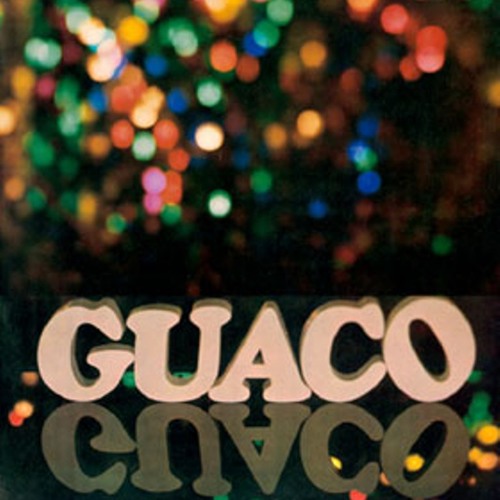
Side A
01- Guaco Pa' Tí (Ricardo Hernández/Gustavo Aguado)
02- Seguire Gaiteando (Las Maletas) (Ricardo Hernández)
03- La Diferencia (Romer Quintero/Gustavo Aguado)
04- Vida (Ricardo Hernández)
05- A Patinar (Ricardo Hernández)
Side B
01- El Billetero (Ricardo Hernández)
02- Chinca y Ricardo (Ricardo Hernández)
03- Tierra Bonita (Amílcar Boscán/Sundin Galué)
04- Goza (Ricardo Hernández)
05- Esequibo (Heriberto Molina/Amílcar Boscán)
06- Aguilas Del Zulia (Ricardo Hernández)
Personnel
Vocals: Gustavo Aguado (tracks A1, A3, B2, B5), Sundín Galué (tracks A2, A4), Amílcar Boscán (tracks A5, B1, B3), Ricardo Hernández (track B4)
Tambora: Johnny Flores & Luís Rincón
Charrasca: Alexis Moreno
Congas: Fernando Valladares
Drums: Federico Pineda
Furro: Alfonso Aguado
Flute & Sax: Frank Velásquez
Guitar: Romer Quintero
Cuatro: Ricardo Hernández
Bass: Sundín Galué, Romer Quintero
Piano: Alejandro Avila
Violin: George Acosta & Rubén Dario Cova
Viola: Alfonso Briñez
Cello: Walter Romero
Production Credits
Produced by Orlando Montiel
Musical Director: Ricardo Hernández
Recorded & Mixed by Ricardo Landaeta at Sono Dos Mil (Caracas)
Graphic Design: Miguel Briceño & Orlando Montiel
Cover Photo: Miguel Briceño
Back-cover Photo: Filipo Biloti
The line-up remains the same but the important addition of 17-year-old virtuoso Fernando Valladares, who could play any percussion instrument with amazing ease and fluidity and would remain an imposing figure in the rhythm section for the following 22 years. Ricardo Hernández also added an entire string section, which results in a strong charanga flavor added to the proceedings.
Guaco Pa' Tí is another "La Mitad" type arrangement, typical of Hernandez' style in this era, it features long, evolving and highly melodic instrumental passages in lieu of mambo sections. There's shades of proggresive rock involved and I have it on good terms that many members of Guaco past and pressent are huge Genesis fans. So there's that. La Diferencia continues Guaco's experimentation with disco tropes before culminating in a tasty montuno section. El Billetero has a lovely displaced piano tumbao on the introduction and features blatant disregard for clave orientation.
This record was recorded at Estudio Sono Dos Mil by Ricardo Landaeta, their relationship goes back to at least 1973 and continued through 1985. They would later return in the mid 90s for their most inspired work, so keep the name in mind.
1982 - Guaco 82 - Integra
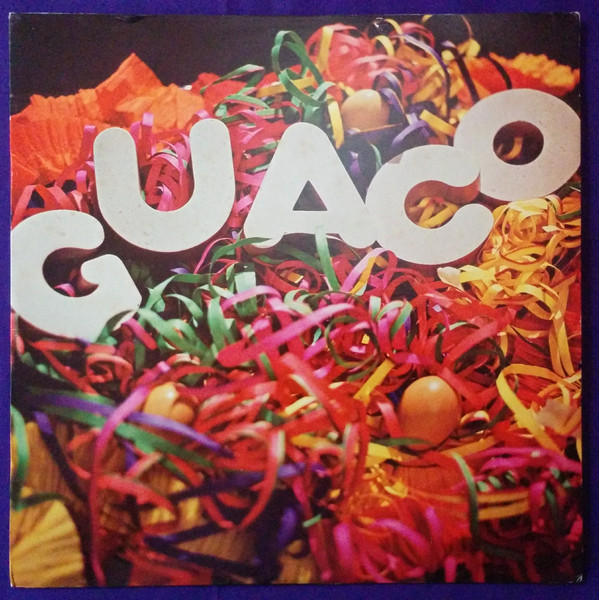
Side A
01- Pastelero (Ricardo Hernández)
02- Para Ella (Ricardo Hernández)
03- Madre (Ricardo Hernández)
04- Guaco y Tambora (Ricardo Hernández)
Side B
01- Así, Soy Yo (H. Molina/Amílcar Boscán)
02- Brindis (R. Quintero/J. Suárez/H. Molina)
03- Por Eso Me Encanta Maracaibo (Ricardo Hernández)
04- Para Ti Chinita (Ricardo Hernández)
05- Parranda De Navidad (H. Molina/Ricardo Hernández)
Personnel
Vocals: Amílcar Boscán (tracks A1, B3, B4), Gustavo Aguado (tracks A2, B1, B5), Ricardo Hernández (tracks A3, A4), Sundín Galué (track B2)
Tambora: Johnny Flores & Luís Rincón
Congas: Fernando Valladares
Drums: Federico Pineda
Charrasca: Alexis Moreno
Percussion: Alfonso Aguado
Flute & Sax: Frank Velásquez
Guitar: Romer Quintero
Cuatro: Ricardo Hernández
Bass: Sundín Galué
Piano: Alirio Pérez
Violin: Susan Siman & Rubén Darío Cova
Viola: Alfonso Briñez
Cello: Walter Romero
Backing Vocals: Gustavo Aguado, Amílcar Boscán, Sundín Galué, Ricardo Hernández & Romer Quintero
Guest Musicians:
Quinto Solo: Milton Cardona (track A1)
Bata Solo: Edward Pimentel (track B3)
Production Credits
Produced by Orlando Montiel
Musical Director: Ricardo Hernández
Recorded & Mixed by Ricardo Landaeta at Sono Dos Mil (Caracas)
Recording Assistants: Alejandro Rodríguez & Ignacio Rojas
Graphic Design & Photo: Miguel Briceño & Orlando Montiel
Alejandro Ávila departs and in comes the great Alirio Pérez, a very creative and forceful piano player, the line-up remains the same otherwise. Valladares covered for Pineda on drums from time to time because he was studying abroad. According to the credits, this is the first album that does not feature the furro friction drum.
Pastelero, inspired by Argenis Carruyo's side gigs when he was a young kid, became one of Guaco's biggest and most inspired hits. It follows Billetero in a line of songs that would highlight the day-to-day activities of the common citizen, much like a certain Mr. Formell. Para Ella is another "La Mitad" offering. It takes its sweet time getting through the arrangement, running almost 7 minutes long and there's not a moment wasted, including a swanky 5/4 interlude. Guaco y Tambora recieves its first make-over and it's improved ten-fold, including a very timba-pressaging coro. Side 2 is much more straight ahead gaita, yet very solid and professional.
1983 - Guaco 83 - Integra
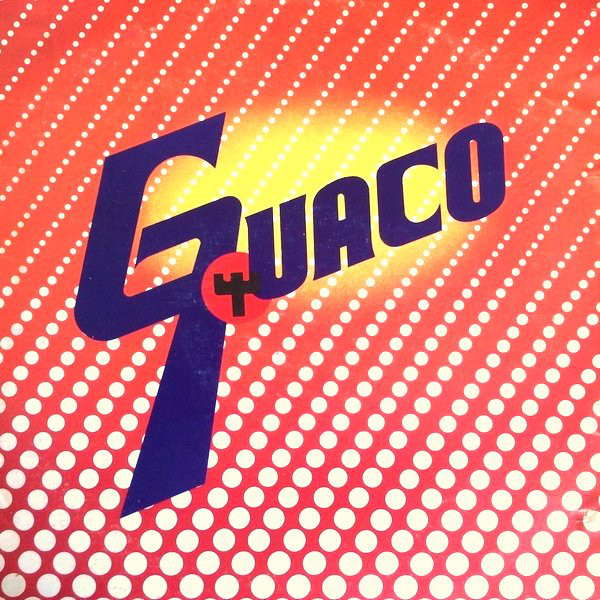
Side A
01- Cepilla'o (Ricardo Hernández)
02- Adiós Miami (Heriberto Hernández/Ricardo Hernández)
03- La Feria De La Chinita (Heriberto Molina/Ricardo Hernández)
04- Me Gustas (Romer Quintero)
Side B
01- El Pavito (Amílcar Boscán)
02- Tú (Ricardo Hernández)
03- Tú Bebé (Ricardo Hernández)
04- Lamento (Romer Quintero)
Personnel
Vocals: Amílcar Boscán (tracks A1, A2, B1), Gustavo Aguado (tracks A3, A4, B2), Ricardo Hernández (track B3), Sundín Galué (track B4)
Tambora: Johnny Flores & Luís Rincón
Congas: Rolando Hernández
Drums: Federico Pineda
Drums & Timbales: Fernando Valladares
Charrasca: Alexis Moreno
Percussion: Alfonso Aguado & Heriberto Molina Jr.
Flute & Sax: Frank Velásquez
Trumpet: Juan Carlos Salas & Greg Buckley
Trombone: Norman Cepeda
Guitar: Romer Quintero
Bass: Sundín Galué
Violin: George Acosta & Rudelmis Moreno
Production Credits
Produced by Alfonso Aguado
Executive Producer: Orlando Montiel
Musical Director: Ricardo Hernández
Recorded by Ricardo Landaeta, Alejandro Rodríguez & Ignacio Rojas
Mixed by Ricardo Landaeta
Recorded & Mixed at Sono Dos Mil (Caracas)
Graphic Design: Publicidad Republica
Cover Art: Ricardo Matos & Juan Quintana
Guaco 83 sees the band adding drums to every single track and the results are electrifying. Impressive hi-hat work by both drummers. Valladares also moves to Timbales as Ricardo Hernández added his brother, Rolando to play congas. It was a desperate move, as he felt he was being squeezed out of the band, he just showed up with a set of timbales to a gig one day and nobody said anything, so the timbales stayed. As usual, they were the first gaita band to add timbales to their rhythm section.
They also added a full horn section and the strings got cut in half. By now Guaco was running a hefty 20 person crew, it was referred to as a "military high school class" in jest by members of the band. Both Juan Carlos Salas and Norman Cepeda have remained part of the horn section to this very day.
Cepillao, a paean to shaved ice (yes) kept the hits train rolling. Adios Miami is a subtle jab at the worsening purchasing power of the venezuelan Bolivar, as the country was entering the first of many economic recessions and general disarray, it laments the inability to enjoy vacations in Miami. Me Gustas, El Pavito, Tu Bebé and especially Tú (that hi-hat again!) are great dance tracks.
1984 - Guaco... Es Guaco - Sonográfica
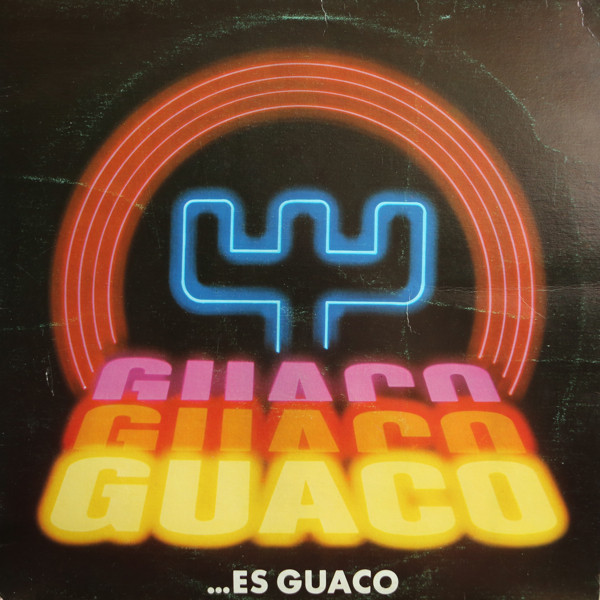
Side A
01- Un Cigarrito y Un Café (Ricardo Hernández)
02- Quiero Ser Un Guaquito (Ricardo Hernández)
03- Amor Amor (Romer Quintero/Gustavo Aguado)
04- Quiéreme (Sundín Galué/Romer Quintero)
Side B
01- Me Gustan Las Caraqueñas (Ricardo Hernández)
02- La Gordita (Amílcar Boscán)
03- El Mala Paga (H. Molina/Ricardo Hernández)
04- Chinita II (Ricardo Hernández)
05- Rumba De Tambores (Ricardo Hernández)
Personnel
Vocals: Amílcar Boscán (tracks A1, A2, B2, B3), Gustavo Aguado (tracks A3, B1, B4), Sundín Galué (track A4), Ricardo Hernández (tracks B3, B5)
Tambora: Johnny Flores & Luís Rincón
Congas: Rolando Hernández
Drums: Federico Pineda
Drums & Timbales: Fernando Valladares
Charrasca: Alexis Moreno
Percussion: Alfonso Aguado
Flute & Sax: Frank Velásquez
Trumpet: Greg Buckley & Juan Carlos Salas
Trombone: Norman Cepeda
Violin: Rudelmis Moreno & Alejandro Rutkauskas
Bass: Sundín Galué
Guitar: Romer Quintero
Piano: Alirio Pérez
Backing Vocals: Gustavo Aguado, Ricardo Hernández, Sundin Galué, Romer Quintero, Amílcar Boscán & Fernando Valladares
Production Credits
Produced by Alfonso Aguado & Gustavo Aguado
Musical Director: Ricardo Hernández
Recorded & Mixed by Ricardo Landaeta at Sono Dos Mil (Caracas)
Graphic Design: Tomas Jiménez
Graphic Concept: Creatidea
Photo: Jorge Alonzo
By now Guaco had kept the same line-up relatively stable and were building off a constant stream of hits and inventive work and this album was not the exception. Un Cigarrito y Un Cafe features a very long bloque both and the start and the end and a very fun interlude part. Amor Amor and Quiereme are both romantic dance tracks. Me Gustan Las Caraqueñas is a Ricardo Hernández original that was originally recorded in 1983 by the Caracas-based (and Guaco copycat) Jaraná. Guaco's version was a national hit (and a blatant attempt to get more radio-play in the capital city). Rumba de Tambores, as its name indicates, is a hardcore show-stopping tune.
1985 - Guaco 85 - Sonográfica
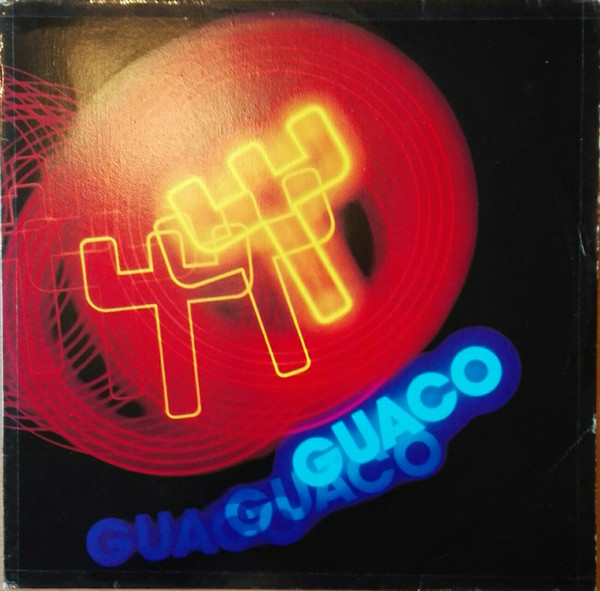
Side A
01- A Comer (Ricardo Hernández)
02- Sentimiento Nacional (Ricardo Hernández)
03- Paola (Romer Quintero)
04- Doña Chancleta (Ricardo Hernández)
Side B
01- Dime (Ricardo Hernández)
02- No Más Engaño (Sundín Galué)
03- Me Gusta Como Lo Haces (Gustavo Aguado/Romer Quintero)
04- Gaitica (Ricardo Hernández)
05- Guaco-Loquero (Ricardo Hernández)
Personnel
Vocals: Gustavo Aguado (tracks A1, B4), Daniel Somaróo (tracks A2, A4), Romer Quintero (track A3), Ricardo Hernández (tracks B1, B5), Sundín Galué (track B2)
Tambora: Johnny Flores & Luís Rincón
Congas: Rolando Hernández
Drums: Federico Pineda
Timbales and Keyboards: Fernando Valladares
Charrasca: Alexis Moreno
Percussion: Alfonso Aguado
Flute & Sax: Frank Velásquez
Trumpet: Juan Carlos Salas & Manuel Romero
Trombone: Norman Cepeda
Violin: Rudelmis Moreno & Alejandro Rutkauskas
Bass: Sundín Galué
Guitar: Romer Quintero
Piano: Alirio Pérez
Backing Vocals: Gustavo Aguado, Ricardo Hernández, Daniel Somaróo, Sundin Galué & Romer Quintero
Production Credits
Produced by Guaco
General Direction: Alfonso Aguado & Gustavo Aguado
Musical Director: Ricardo Hernández
Recorded by Hermes Carreño, Juan Carlos Socorro & Rafael H. at Telearte (Caracas)
Recording Assistants: Carlos Montezuma & Manuel Guillermo
Mixed by Ricardo Landaeta at Sono Dos Mil (Caracas)
Mixing Assistants: German Landaeta & Ricardo Landaeta Jr.
Graphic Design & Photo: Creatidea
Guaco 85 opens with the double whammy of A Comer, a hilarious and encyclopedical retelling of all the food items the narrator wishes to consume and Sentimiento Nacional, probably Guaco's biggest and most emblematic song, which began life as a beer jingle and then was reused to write this tune. It is sung by Daniel Somaróo, who entered for Amilcar Boscán -he would go on to have a mildly succesful career in Colombia and he would even write songs for Willie Colón-. Somaróo was poached straight from the after-mentioned Jaraná. He had the (very dubious) homor of becoming the first member of the band not born in the Zulia state.
Dime is a personal favorite, even if its lenghty introduction sounds like the theme song to a late night show, but it's part of its charm. Me Gusta Como Lo Haces features very timba-esque coros at the end. Guaco Loquero is one of Guaco's quirkiest and silliest tune yet gathers a nice head of steam and ends up becoming another strong finish.
Valladares also added a Yamaha DX7 keyboard right next to his timbale set, but he also played drums and congas on the record, due to Pineda being AWOL for most of the recording. He would leave shortfly after the album was released. By now, gaita was becoming more and more scarse within the group's repertoire, there's only two gaita songs present and the rest is a variety of tamboreras and what was rapidly becoming a genre of its own, to be called just like the band, confusing everybody in the process.
Ricardo Hernández would be leaving Guaco in its highest popularity peak after fighting with Gustavo Aguado, allegedly over money issues. He started another band called Rococó and released four albums' worth of music whereupon he continued with his trademark signature arranging and songwriting style. Sadly, relations continue to be strained with Guaco to the present day.

















